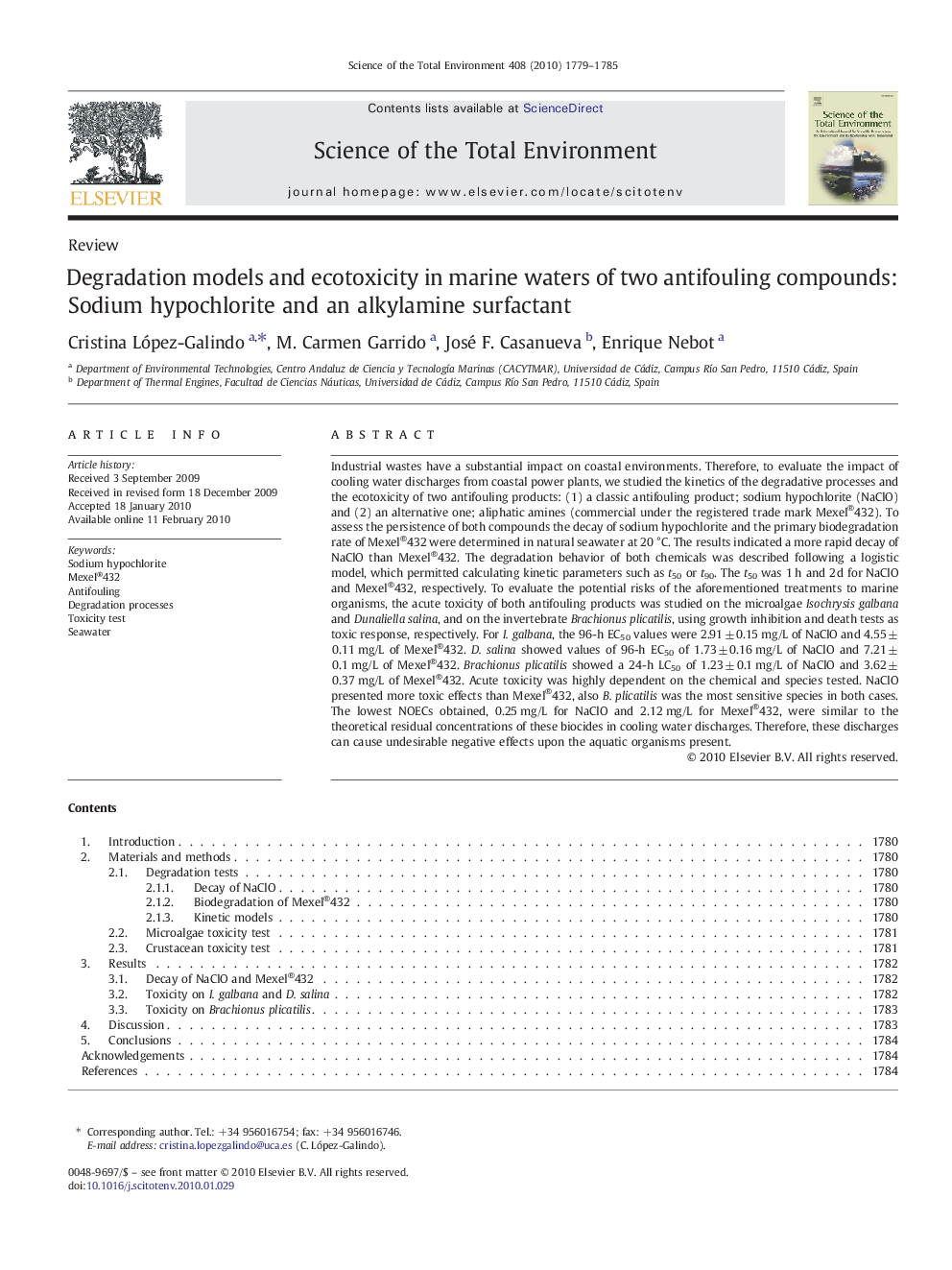| کد مقاله | کد نشریه | سال انتشار | مقاله انگلیسی | نسخه تمام متن |
|---|---|---|---|---|
| 4431848 | 1619878 | 2010 | 7 صفحه PDF | دانلود رایگان |

Industrial wastes have a substantial impact on coastal environments. Therefore, to evaluate the impact of cooling water discharges from coastal power plants, we studied the kinetics of the degradative processes and the ecotoxicity of two antifouling products: (1) a classic antifouling product; sodium hypochlorite (NaClO) and (2) an alternative one; aliphatic amines (commercial under the registered trade mark Mexel®432). To assess the persistence of both compounds the decay of sodium hypochlorite and the primary biodegradation rate of Mexel®432 were determined in natural seawater at 20 °C. The results indicated a more rapid decay of NaClO than Mexel®432. The degradation behavior of both chemicals was described following a logistic model, which permitted calculating kinetic parameters such as t50 or t90. The t50 was 1 h and 2 d for NaClO and Mexel®432, respectively. To evaluate the potential risks of the aforementioned treatments to marine organisms, the acute toxicity of both antifouling products was studied on the microalgae Isochrysis galbana and Dunaliella salina, and on the invertebrate Brachionus plicatilis, using growth inhibition and death tests as toxic response, respectively. For I. galbana, the 96-h EC50 values were 2.91 ± 0.15 mg/L of NaClO and 4.55 ± 0.11 mg/L of Mexel®432. D. salina showed values of 96-h EC50 of 1.73 ± 0.16 mg/L of NaClO and 7.21 ± 0.1 mg/L of Mexel®432. Brachionus plicatilis showed a 24-h LC50 of 1.23 ± 0.1 mg/L of NaClO and 3.62 ± 0.37 mg/L of Mexel®432. Acute toxicity was highly dependent on the chemical and species tested. NaClO presented more toxic effects than Mexel®432, also B. plicatilis was the most sensitive species in both cases. The lowest NOECs obtained, 0.25 mg/L for NaClO and 2.12 mg/L for Mexel®432, were similar to the theoretical residual concentrations of these biocides in cooling water discharges. Therefore, these discharges can cause undesirable negative effects upon the aquatic organisms present.
Journal: Science of The Total Environment - Volume 408, Issue 8, 15 March 2010, Pages 1779–1785